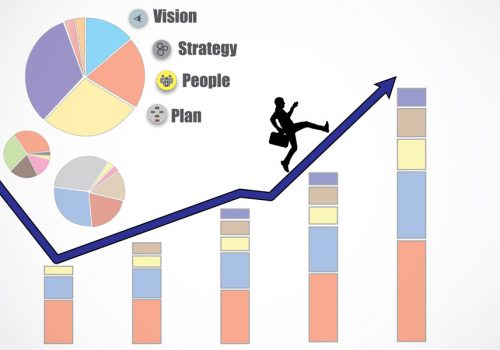We’re now firmly in the digital age, racing ahead with the latest tools and tech, and transforming the businesses that shape our society. Today 70% of the buyer’s journey is done digitally, and this is only expected to increase as we move into 2020 and beyond. This transformation is happening from the inside, where teams all across the organization are adapting to new ways of acquiring customers in a modern world. Today we’re focusing on the sales team and Sales Development Representatives (SDR) in particular. The role of SDR is becoming more prominent in the business landscape, and with good reason. According to one study, companies that excel at lead nurturing generate 50% more sales-ready leads and do it at a 33% lower cost. Let’s take a look at how SDRs are providing value to companies and how to be a successful SDR.
What is a Sales Development Representative?
The Simple and Technical Definition
A Sales Development Representative (SDR) is a type of sales representative whose primary focus is outbound prospecting. SDR’s typically focus on prospecting, outreach, and lead qualification.
Getting into the Details and the Why
In the past, many companies thought it was sufficient enough to just hire “Sales Reps” or a “Salesperson” to handle all aspects of the sales cycle. However, as time has gone on, it’s become increasingly clear that this isn’t the most efficient approach. Organizations are now realizing that they can have much greater success in terms of increased revenue by splitting and structuring their sales teams based on distinct roles. SDRs are one such example of this splitting and structuring. These teams don’t function as entirely separate entities but rather have specific goals and performance metrics that when done right, will benefit the sales operation as a whole.
Many companies are now hiring SDRs and are seeing great results. Traditionally, it was the deal closers who got all the attention in the sales world, but SDRs are now starting to get the recognition they deserve for their role in taking the organization to the next level.
The main goals of SDRs are to:
- Contact businesses and learn about them, usually initiate the first communication.
- Qualify leads and move them through the company sales pipeline and funnel.
- Determine which leads are more viable than others and pass this information on to the relevant team for further treatment.
- Act as quality control for sales leads so that the process of closing and onboarding new accounts is as frictionless and efficient as possible.
- Be a product or service expert.
- Research accounts and generate interest.
- Meticulously track all relevant information related to leads or qualification.
Sales Development as a concept has existed for over 30 years and been called different things during this time. You often see SDR’s also called Business Development Representatives (BDRs), or Inside Sales Representative (ISRs), although some companies do treat these roles as distinct entities in their own right.
What we’re really talking about here is sales specialization. While in the past you could have one representative who handles contacting businesses, qualifying leads, and closing sales, in the modern world, specialization is becoming the preferred way of doing things. You may have a sales rep who is great at closing a deal when they already have a great lead but isn’t so great at getting new accounts interested in the service. This is where an SDR approach is superior. Team members can play to their strengths more effectively and provide more value to the business as a whole.

How Sales Development Representatives Can Take Your Company to the Next Level
In this section we’re going to break down exactly have SDRs operate so we understand their role in the company, and then we’re going to delve into how this leads to greater financial success.
Establishing Contact
This element of the SDR role requires robust communication skills and a high degree of flexibility. SDRs need to understand that not all companies want to be approached in the same way. You’re not contacting a company, you’re contacting a person within a company, and all people have their own communication preferences. Relying on a one size fits all approach simply doesn’t work. According to InsideView, 90% of decision-makers “never” respond to cold calls. Your goal is to get better odds than 10%, and this requires that you adapt on the fly. You can use calls, emails, set up meetings, or run a campaign in conjunction with the marketing team. In fact, more than 70% of sales professionals now use social media tools like Facebook and LinkedIn in the sales process.
Whatever approach you take, the key is to not see it as the only approach.
Contact can be further split into outbound or inbound sales. For outbound sales, the SDR focuses on contacting prospects that have had no prior contact with the company but seem like a good fit for your service. For inbound sales, the SDR is contacting prospects that have already shown interest in your service and established contact themselves.
Qualifying Leads
Qualifying leads is all about determining whether the prospect is a good fit for your service. The key here is to ask the right questions to decide whether the relationship should move forward. Understand that this is a two-way street. You likely already know what you want from the relationship – a long term customer, but the prospects’ needs may be more complex. Disqualifying customers because your service doesn’t match their needs can be a great thing. It distinguishes the more viable (and more likely to be satisfied customers) from the others. It also gives the sales team more focus because the less time you focus on prospects that will never use your service, the more time you can dedicate to the prospects that will.
Educating Leads
Tying into the last section, this is the part where you educate your leads in everything to do with your business. To do this, the SDR must have a thorough understanding of the service you offer and be able to answer any questions that are thrown their way. Transparency is a valuable commodity in the digital age, so you’d be wise to be as transparent as possible.
Supporting The Wider Sales Team
As we briefly touched on above, the role of SDR can mean different things to different companies. The general responsibilities are always the same, but the added responsibilities may differ from company to company depending on how their sales operation is set up. This means that SDRs may take on other tasks that support the wider sales team such as driving attendance for webinars and live seminars, prepare executive summaries, and build awareness on special projects or events.
How Sales Development Representatives Can Take Your Company to the Next Level
Focus
At least 50% of your prospects are not a good fit for what you’re selling. This means you can potentially waste countless hours on prospects that will never buy your product, and time is money.
Specialization
According to one study, 59% of companies say that the top barrier to delivering effective sales training is sales reps not being held accountable for applying the skills they’ve learned. This is where a more specialized approach is more effective. General sales training is exactly that – it’s too general. This means reps are more likely to forget some parts of the training in favor of the parts that resonated more with their skillset or interests. With specialization, you know your reps are already skilled in all areas, it’s just about taking those skills to the next level.
The Role of SDR’s in SaaS Companies
Sales Development Representatives are becoming an increasingly vital part of the sales operation in SaaS companies, but why? Put simply, we’ve seen an explosion in SaaS companies in the last decade because companies are increasingly seeing the value in releasing themselves of the burden of managing their own software. Managing your own software has its benefits, but it also comes with a bunch of hassle and often higher costs. A SaaS approach often results in cost savings, higher security, increased scalability, and increased mobility across devices, making it a great option for plenty of businesses.
In SaaS companies, SDR’s play the important role of establishing contact, qualifying leads, and setting appointments before passing the lead onto a sales executive. Because they are experts in the service, they know exactly which companies will benefit from the service, and which companies won’t. They pick up cold prospects and turn them into warm leads thereby increasing the rate of successful sales.

5 Characteristics of Successful Sales Development Representatives
1. Get Passionate
In many ways, this point can apply to the sales team as a whole, but it’s also particularly important for SDRs. SDR’s need to be both experts in the product and an advocate for your brand. How are they going to make a prospect passionate about the product if they aren’t passionate about themselves? If you’re recruiting a Sales Development Representative, look for their passion rather than trying to match them to a checklist of a perfect SDR. Passion is often much more important than other desired qualities.
Tip for Recruitment
Get them talking about what interests them. If they’ve put snowboarding as their hobby on their Resume, ask them about it. This is a quick method of gauging passion. If they’re not enthusiastic, animated, and passionate about something they choose to do in their free time, then they won’t display enthusiasm for your product.
Tip for SDRs
Don’t try to fake passion, because you won’t be able to keep up the act for long. Instead, you should think carefully about the options available to you. Don’t just go for the company offering the highest salary, go for the company whose product you believe in. The more passion you have for the product, the better you’ll be at your job.
2. Learn How to Earn Attention
There’s a science to earning attention and as an SDR it’s your job to study this science and put your findings into practice. For example, did you know that the optimal voicemail is between 8 and 14 seconds? Or that the worst times to call are Monday morning or Friday afternoon? Or that there’s a 10x drop in lead qualification when you wait longer than 5 minutes to respond? You also need to spend time on perfecting your approach to prospects. What tactics have worked well for you in the past? What’s working well for your teammates? Listen to podcasts, watch videos, do training, and get educated in how to influence people.
3. Be in It for the Long Term
Many SDRs see the role as a steppingstone to a higher paying or more prestigious role in the sales team. There’s nothing inherently wrong with this, but your focus should always be on your current role. SDRs are more efficient in their roles and have a more thorough understanding of the product when they have been in the role for longer.
4. Be Resilient
Most SDR jobs require 30+ phone calls a day and 30+ emails a day. You’ll get plenty of “no’s”, plenty of emails that never get a response, and be hung up on even more times. To be a great SDR, you need to be resilient to this form of constant rejection otherwise you’ll lose your passion and your work will suffer. When it comes to recruitment, retail or customer service experience is often a good indication that someone has a resilient character since people who have worked in these industries have been on the front line of the company dealing with every type of customer imaginable.
5. Be Curious
The role of SDR is still evolving and we’re bound to learn new insights and gain new perspectives on how the role should be handled as we progress through the digital age. This is why curiosity is a great asset. Be curious about the industries you offer services too, be curious about your service, and be curious about new ways of solving problems.















